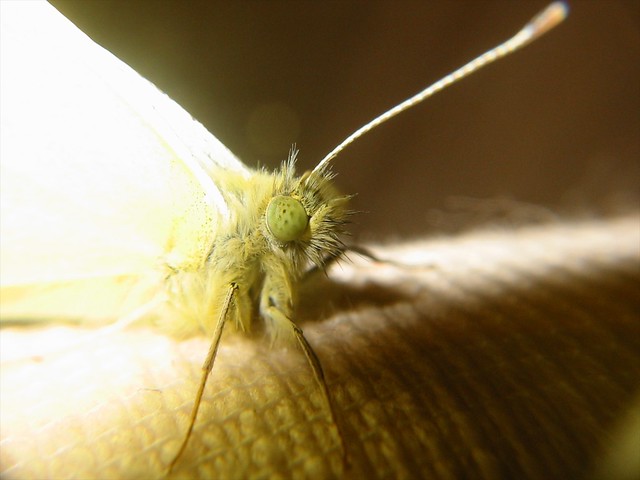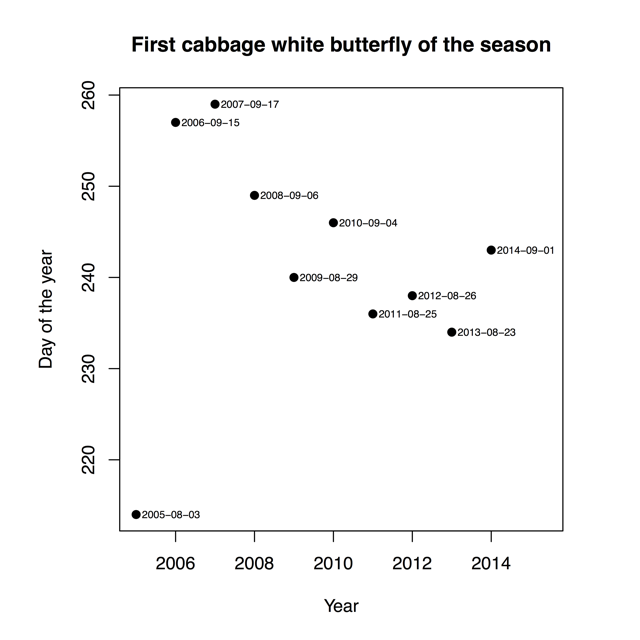RECENT ARTICLES
- CEBRA: An optimised and standardised sampling protocol for BioBlitz
- Stop it people, the plural of anecdote IS data!
- That's no pollinator, that's a flower visitor
- Add a scale to your macro photos
- What to photograph when counting the wild
- Imagine counting the wild on EVERY street in a city!
- My wild counting workflow
- A butterfly flew through
- Why iNaturalist observations without photos can be research grade
- Why you shouldn’t use a spreadsheet for data entry
- All articles ...
It's Spring. Cabbage white butterflies are flying.
I’ve been counting cabbage white butterflies for several years now. There’s a hint that they’re emerging earlier now, but the trend is still inconclusive.
written Sep 1, 2014 • by Jon Sullivan • Category: Wild Changes

I saw my first cabbage white butterfly (Pieris rapae) of the season on today, flying along the roadside of McDrurys Road in Ladbrooks, in the farmland between Christchurch and Lincoln, New Zealand. This is a sure sign that Spring is just around the corner. Local botanists have been commenting about what an oddly early and extended flowering season we’ve had over this year’s unusually wet and mild autumn and winter. However, the cabbage whites don’t seem to have noticed.

I’ve been monitoring butterflies in and around Christchurch, New Zealand, for over a decade now, and I just had a look at the earliest date I’ve seen adult cabbage whites flying over the past ten years. This year’s arrival is on time. Adult emergence times might not be easily tricked by temperature if they’re primarily triggered by day length.
When interpreting that graph, note that I was paying much more attention to naturalised butterflies like cabbage whites from 2008 onwards. Before then, my attention was focused on native butterflies and I was consistently recording naturalised butterflies like cabbage whites only on my bike rides to work. Those tend to be early morning and not peak butterfly flying time.
With the exception of that anomalous early record in 2005, there is a hint that butterflies are emerging earlier, but the data is too noisy to yet have any confidence. The more parsimonious conclusion for now is simply that, in and around Christchurch, adult cabbage white butterflies first show up in late August or early September. The story might get more interesting with a closer look at all my counts, or another 5 to 10 years of data.
Cabbage whites are New Zealand’s most abundant butterfly, an accidentally introduced European species that is right at home feeding on New Zealander’s cabbages as well as wild mustards on roadsides and other species in the Brassicaceae family. Cabbage whites overwinter as dormant pupae; butterflies eclose out when winter is done.
Entomologist George Gibbs notes in his excellent 1980 book, “New Zealand Butterflies” that if you look closely at the spring cabbage whites, you’ll notice that they are smaller and with less dark pigment than the summer butterflies. Warmer temperatures produce somewhat darker butterflies. Those dark spots (one per forewing on the male and two per forewing on the female) are likely involved in mate recognition and selection.

